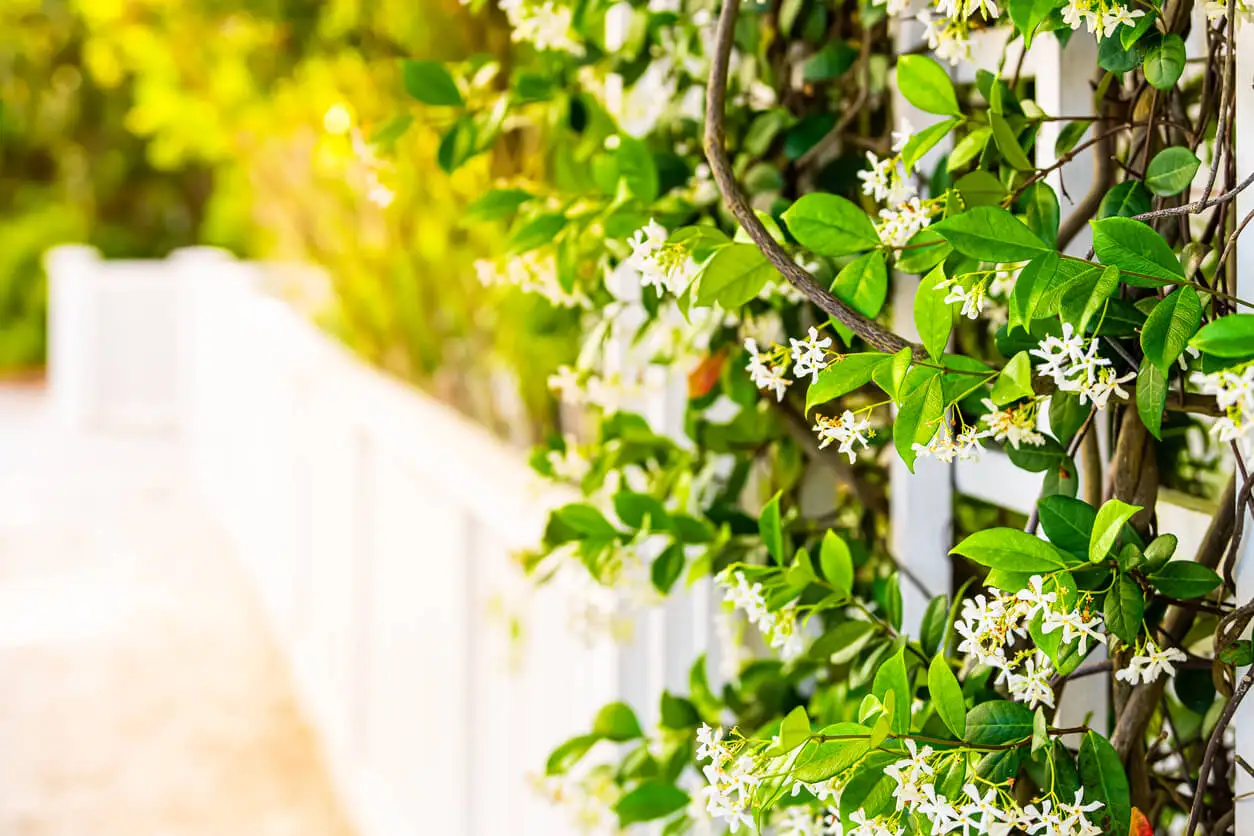How to Make a Vine Stand Upright

A beautiful and healthy vine adds to your home decor. There are many different types, including perennial vines with flowers of different colors and shapes and even leaves with beautiful shades of green. However, the attractiveness of a vine is only appreciated as long as it stands upright. So, how can you make a vine stand upright? Fortunately, there are many alternatives.
The first thing to keep in mind is that a plant in good shape will always be easier to handle. Your vine may require a support or some other structure to thrive and achieve the expected visual impact. We’ll explain it step by step here.
6 ways to make a vine stand upright
Vines are used to adorn walls, walls, columns, balconies, and even fences. They create a natural space that’s pleasing, they grow in all directions, always seeking sunlight, and the way they support themselves can vary according to the species.
Here are some examples.
- Ivy is held firm by anchoring its roots. These facilitate its grasping and climbing.
- Plants such as grapevine, Virginia creeper, and sweet pea develop by means of a kind of tendrils.
- Honeysuckle and its peers develop a system of intertwining stems. This helps the plant to spread.
So, the method you use to keep them firm will depend on what you have described. Now, discover the best ways to do it.

We think you may be interested in reading this, too: 5 Tips for Decorating Your Home with Mini-plants
1. Use a trellis or support
This is ideal for tying up jasmine and climbing roses, the trellis material can vary. Your choice will depend on your tastes and needs.
They’re made of plastic, metal, and wood; the latter is one of our favorite options. What’s important at this point is that the material is able to support the weight of the plant.
Keep in mind that they come with beautiful designs, so it will help you to complement the decoration. However, if you don’t have the budget, you can use a sheet of woven wire for the climber to hold on to and grow neatly.
2. Wall fixtures
Hooks, nails, rings and other types of attachments are useful for establishing a growth path for vines. You may need a drill and other tools to anchor to the surface. Also, a wire will act as a guide, so that the plant will entangle itself in it.
Create channels that are spaced about 10 centimeters apart. It’s not recommended that there’s a lot of space between each wire. And if you’re worried about it showing, don’t worry! Over time, as the vine grows, it won’t be noticeable.
3. Wire arches
Space is not an impediment to having such a structure. A wire or wooden arch can vary in size and adjust to the needs of the site.
These elements provide an excellent resting surface for Clematis-type climbers, for example. In addition, it will leave space on the ground to place other pots.
4. Cages or obelisks
These structures are useful so that the roots do not tangle or bend. They come in various sizes and materials. Wooden cages and obelisks make them look more aesthetically pleasing.
5. Wire or wooden ladders
These ladders are a gardening classic, because they’re very easy to use and you can move them without any complications. They’re used as screens for flowers or plants that grow vertically.
They come in a variety of designs and colors. You can play with the color of the wall to create a beautiful contrast and make the vine stand firm.
Like this article? You may also like to read: How to Use Neem Oil to Look After Your Garden Plants
6. Use the hook trick to get the vine to stand upright
This is a method that has gone viral on the internet and has given the expected result. Have a wire hook on hand, some plant fasteners, sewing thread, scissors, water, and clear nail polish.
Once everything is ready, follow these steps:
- Form a diamond shape with the clothespin or you can leave it as is. Then, you should unfold the curved crochet hook to form a straight line.
- Paint the wire with nail polish and wait for it to dry. This will prevent the rust on the wire from damaging the plant.
- Now it’s time to bury it in a straight line in the ground, being careful not to hurt the plant. If possible, put it in the middle of the vine, but be very careful not to hurt the roots.
- Finish by entangling the plant in the wire, but without applying extreme force.
If you have any trouble holding the plant, you can help yourself with the thread. You give it a few twists, without tightening it too much. It’s just a matter of the vine growing and thriving around the wire.

Make sure you have a good support for your vine
This is a type of plant that, by nature, likes to take as much ground as possible. So, if you want one in your home, yard, or outdoor space, you’ll need to mark guides to show it where to grow.
Then, remember to install some supports to not only help control the direction it grows, but to keep it growing healthy!
This text is provided for informational purposes only and does not replace consultation with a professional. If in doubt, consult your specialist.








